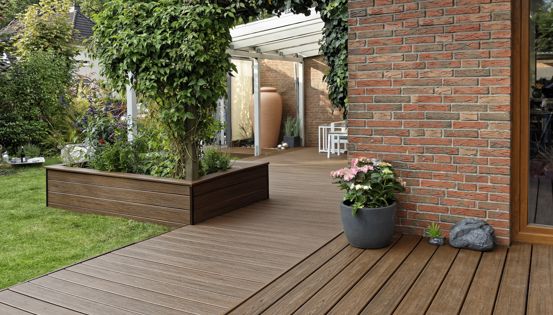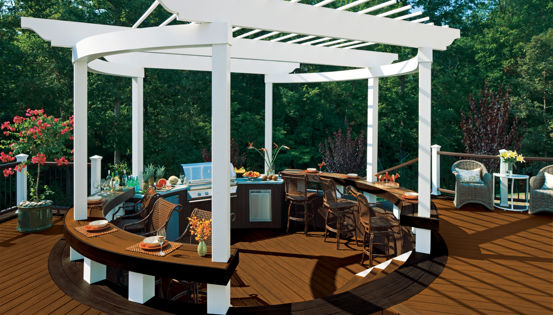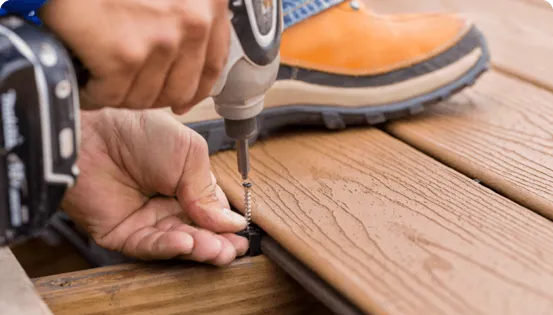Deck Stair Railing Installation: Expert Advice for Homeowners
Your deck stair railing isn’t just about safety—it’s also a chance to enhance the look of your deck. Before you dive into the project, there are a few important things to keep in mind. First, check your local building codes to ensure your railing meets safety standards. Next, think about the materials and hardware that will work best for your deck’s style and durability needs. This guide will walk you through the basics, helping you avoid common mistakes and giving you the confidence to tackle your stair railing project the right way.
Important Questions to Ask Before You Start
Before you start installing your deck stair railing, take a moment to think through a few key considerations. Asking the right questions now can save you time, money, and frustration later. With a bit of planning, you’ll set yourself up for a smooth installation process and a sturdy, safe railing you can rely on. Let’s break it down.
- Does my skill level suit this project?
- Do I have the necessary tools?
- What are the local building code and permitting requirements for deck stair railings?
- How can I make sure my railing is sturdy?
- Do I need a separate handrail?
- Should I use a kit or build from scratch?
- How will the railing complement the overall design of my deck?
- How long does it take to build a deck stair railing?
- How much will my new railing cost?
Necessary Skill Level
Installing deck stair railings can be one of the more challenging parts of building a deck, but it’s absolutely doable with the right approach. If you have intermediate carpentry skills, you’re likely ready to take this on. For beginners, don’t worry—you can succeed too with proper preparation, the right tools, and a bit of patience. If this is your first DIY project, consider reaching out to a professional for advice to help you get started on the right foot. Take your time, plan carefully, and you’ll have sturdy, safe railings in no time!
Tools Needed for a Deck Stair Railing Project
Have these tools on hand to ensure you’re prepared for every step of the project. If you’re missing any, consider renting or borrowing them to save money.
Basic Carpentry Tools
- Tape Measure
- Speed Square
- Level
- Chalk Line
- Pencil or Marker
- Circular Saw or Miter Saw
- Drill or Impact Driver
- Clamps
- Drill Bits
- Hammer
- Screwdriver Set
Specialized Tools
- Hammer Drill (for concrete anchors, if needed)
- Post Hole Digger or Auger (if setting posts in the ground)
Safety Gear
- Safety Glasses
- Work Gloves
- Hearing Protection
Dust Mask (for cutting)
Does Building a Deck Stair Railing Require a Permit?
Before building or modifying deck stair railings, it’s important to check with your local building official—you’ll likely need a permit before getting started. In many areas, a permit is required if your deck stairs have four or more risers, or if your deck is over 30 inches off the ground. Making structural changes, like adding or altering stair railings, typically needs approval to ensure everything meets safety codes.
Here’s a quick tip: deck code requirements can vary depending on where you live, so always consult your local building department for specific guidelines. Below, we’ve outlined some basic code requirements to give you a head start. Taking the time to plan and follow the proper steps will help you avoid headaches down the road and ensure your project is safe and up to standard.
Proper Post Spacing
Getting the spacing right for your posts is key to making your structure safe and visually appealing. While building codes often don’t specify a maximum distance between posts, a good rule of thumb is to space them no more than 6 feet apart. This ensures stability and keeps everything looking balanced. If you’re planning a project, keep this guideline in mind to create a sturdy and polished result.
Railing Height
Deck stair railings need to meet specific height requirements to ensure safety and compliance with building codes. Typically, the height should be between 34 and 38 inches. To make sure your deck meets these standards, check out this helpful guide on Deck Railing Codes. It’s a great resource to walk you through the details and get your project done right!
Baluster Spacing
Balusters must be spaced no more than 4 in. apart to prevent small children from slipping between them. Cable railing systems must be installed so that a 4-in. sphere cannot fit through the space between the cables. Because of cable deflection, the cables themselves are spaced closer than 4 in. apart. The exception to the 4-in. rule is that the space between the bottom rail and the stair treads only needs to prevent a 6-in. sphere from passing through.
Keys to Achieve a Sturdy Railing
A sturdy stair railing begins with properly installed stair stringers. Before you start, you can use a Stair Calculator to determine the correct rise, run, and spacing for your stairs. These measurements are critical—they ensure your stairs are safe and comfortable to use.
Use the Proper Hardware
Choosing the correct hardware is crucial to ensure your deck stair railing is secure, durable, and long-lasting. Here are several good options for fastening posts to deck framing or stair stringers:
- Through Bolts: A through bolt is a long bolt that passes completely through a material and is secured on the opposite side with a washer and nut, providing a strong, reliable connection. A carriage bolt, a type of through bolt, features a smooth, rounded head with a square neck beneath it. This square section prevents the bolt from spinning when tightened, making it particularly useful for securing deck railing posts where a flush, finished appearance is desired.
- Lag or Structural Screws: Lag screws (sometimes called “lag bolts”) and structural screws are high-strength fasteners designed for wood. Unlike through-bolts, they don’t require nuts—their threads bite into the wood to create a strong hold. They’re easy to install with an impact driver or wrench, making them a popular choice for many applications, especially where there is no access to attach washers and nuts.
Concrete Anchors: If you’re anchoring stair stringers to concrete, use concrete anchors like these from Trex. You’ll need a hammer drill to bore holes into the concrete, but the installation is straightforward. As you tighten the nut, the anchor expands against the inner wall of the hole and locks securely in place.
Proper Blocking for the Posts is Essential
Always follow the manufacturer’s instructions when installing metal, surface-mounted railing posts to stair treads. There are several ways to create structurally sound posts when you secure wood railing posts to stair stringers. Here is one common method:
- Notch out the bottom of the stringers and connect them all with a 2x4 or 2x6. This board will be used to anchor the stringers to the concrete.
- Install a continuous board along the front of all the bottom stringers with structural screws. You’ll have to shorten the bottom tread length on the stringers to accommodate the thickness of the board.
- Set the posts in the front outside corners of the bottom stringer cavities.
- Add a brace behind each post that runs between the two stringers.
- Add a brace alongside the posts that runs between the front board and the brace boards you just installed.
- Secure the posts with four through bolts: two front to back and two side to side. (Make sure to offset the bolt locations so they don’t collide inside the post.)
Do You Need a Separate Handrail?
If your railing is too close to a wall or the top of the handrail is too high, you may need to add a separate handrail. These are the most common reasons for needing one, and it’s not just about meeting safety regulations—it’s an essential feature to keep everyone safe, especially children and older adults. If you need to install a handrail, here’s what you should know to get started and ensure it’s done right:
- Spacing Requirements: There must be at least 1-1/2 in. of space between the handrail and the guardrail (railing) or wall to allow for a secure grip.
- Graspable Design: Flat 2x4s or 2x6s are not considered “graspable” and will fail inspection. Choose rounded or shaped handrails that are easy to hold.
- Proper Returns: Building codes require handrails to return (dead end) into a wall or structural member of the railing system for safety and stability.
- Extra Protection: If you know that people with unique physical challenges will use your deck, install an ADA (American Disability Act) compliant handrail, designed to provide additional support and accessibility.
If you’re planning to build or update your deck stairs, it’s important to understand the requirements for handrails. For a clear and practical guide, check out this article on handrail requirements. It breaks down the essentials to help you get started with confidence.
Should I Use a Railing Kit or Build from Scratch?
Building your own railing from scratch gives you complete design flexibility, but it requires more cutting, planning, and careful material selection. If you’re an experienced carpenter looking for a custom solution, this approach could be a great fit for you.
On the other hand, using a railing kit simplifies the process and helps you avoid common mistakes—perfect for DIYers looking to save time and effort. For example, Trex stair railing kits come with everything you need: hardware, premeasured, and precut components. This reduces the hassle of measuring, cutting, and those extra trips to the hardware store.
Whether you're customizing your project or choosing a kit, both options have their strengths. The key is to pick the one that matches your experience level and project goals!
How Will the Railing Complement the Overall Design of My Deck?
The railing you choose can significantly impact the look of your deck. Trex offers various styles, colors, and finishes to match your deck’s design—whether you prefer sleek, modern cable railings or classic composite balusters. Tools like this Railing Designer will help you visualize and configure your new railing.
How Long Will It Take Me to Install My Stair Railing?
The time it takes depends on your experience, the complexity of the design, and whether you’re using a kit or starting from scratch. For a DIYer with intermediate carpentry skills working on a single straight flight of stairs, here’s what to expect:
- Wood Railing: (built from scratch): Plan on a full day. You’ll need time for measuring, cutting, fitting balusters, and securing everything in place. If you’re painting or staining, add extra time for finishing and drying.
- Preassembled Railing Kit: Expect 3–5 hours. With most parts pre-cut and ready to go, you’ll spend less time measuring and more time fastening and leveling. Kits typically come with clear instructions that help streamline the process.
Check out this article to discover why railing kits are so much faster to install.
How Much Will My New Railing Cost?
Whether you’re replacing an old railing or adding one to a new deck, cost is usually the first question homeowners ask. Prices vary widely depending on the material you choose, the complexity of the design, and the size of your project. To give you a general idea, here are typical per-linear-foot price ranges for the most common railing
Types (labor not included).
- Wood Railing: $15 to $30 per linear ft.
- Composite Railing: $40 to $80 per linear ft.
- Metal Railing: $50 to $100 per linear ft.
- Specialty Railing like Cable or Glass: $80 to $150+ per linear ft
Helpful Videos
Here are few helpful videos that explain the installation on some popular type of railings.
- Trex Enhance Railing Installation Video
- Trex Signature Railing Installation video
- How to Install a Trex Transcend® Horizontal Deck Railing
- How to Install a Trex Select® Horizontal Deck Railing
For More Information
Looking for additional tips and resources? These links can help guide you through your deck railing project:














